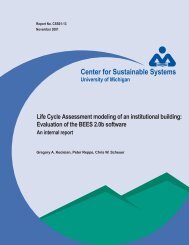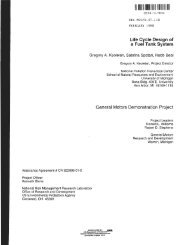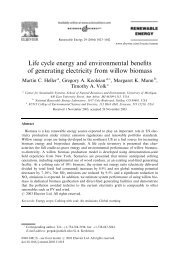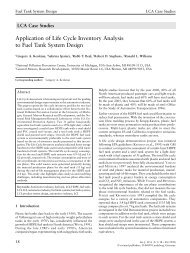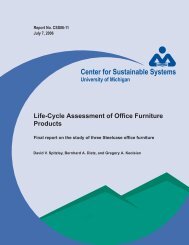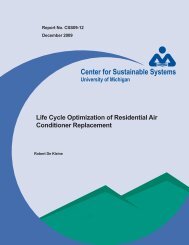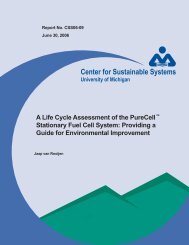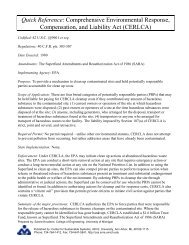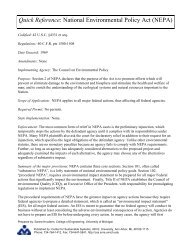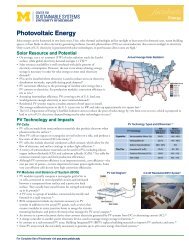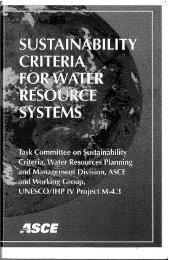Chapter 6 : Sanitary Sewer Overflows (SSOs)
Chapter 6 : Sanitary Sewer Overflows (SSOs)
Chapter 6 : Sanitary Sewer Overflows (SSOs)
Create successful ePaper yourself
Turn your PDF publications into a flip-book with our unique Google optimized e-Paper software.
Wet Weather Benchmarking Report<br />
<strong>Chapter</strong> 6: <strong>Sanitary</strong> <strong>Sewer</strong> <strong>Overflows</strong><br />
New York<br />
Primarily loans from New York SRF program, as well as some state grants available through the American<br />
Recovery and Reinvestment Act of 2009. State assistance is generally limited to loans rather than grants.<br />
North Carolina<br />
Both grants and loans are available, administered by the Construction Grants and Loans Section of the North<br />
Carolina Division of Water Quality and occasionally by the North Carolina Clean Water Management Trust<br />
Fund.<br />
North Dakota<br />
Grants and loans are available.<br />
Ohio<br />
Funding sources for <strong>SSOs</strong> are the same as those for other wastewater system needs: SRF loans, Ohio Public<br />
Works loans, Ohio Water Development Authority loans and grants, federal state/tribal assistance grants<br />
(STAG).<br />
Oklahoma<br />
USDA Rural Development Grants, SRF loans, HUD CDBGs, Bureau of Indian Affairs (BIA) Indian Health<br />
Service grants and loans, local banks, and sales taxes.<br />
Oregon<br />
SRF loans only. No grants exist.<br />
Rhode Island<br />
Communities may be eligible for SRF loans for SSO related construction projects.<br />
Texas: No response.<br />
Washington: No response.<br />
Wisconsin<br />
Loans, WDNR Clean Water Fund, many other funding sources (from which communities may seek loans for<br />
collection system projects).<br />
Wyoming<br />
Funding to increase sewer system capacity or reduce I/I is available through SRF loans.<br />
6.7 Blending Policies<br />
U.S. EPA HQ<br />
The permit for the Blue Plains facility (in Washington DC), which has a combined sewer system, allows<br />
blending of primary treated wastewater with secondary treated wastewater. Blending operates with an interim<br />
authorization, but there is no schedule or plan to eliminate this blending in the future.<br />
Last modified on May 5, 2010<br />
6-16



